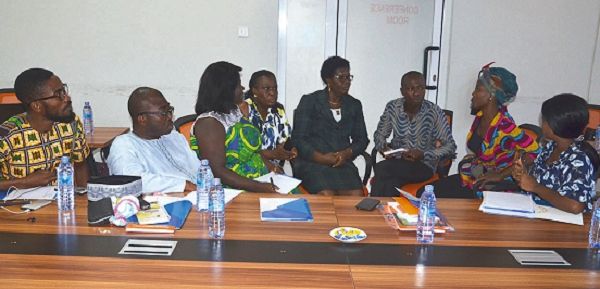
UNFPA identifies media as major partner
The United Nation’s Population (UNFPA) has identified the media as a major partner and tool for the successful implementation of the Adolescent Girls Programme, which is one of its flagship programmes.
The programme is aimed at helping national efforts to model and roll-out interventions to help adolescent girls access gender-responsive comprehensive sexuality education, as well as youth-friendly sexual and reproductive health services and commodities.
Advertisement
To enable the media understand the tenets and aims of the programme, so that they can perform their supportive advocacy role effectively, the UNFPA has built the capacity of more than 20 journalists and bloggers on the programme at Teiman in the Greater Accra Region.
Support
The workshop, organised last Friday, was also to solicit the support of the media to implement the programme by finding out the role they could play.
The participants were mainly members of the Media and Communications Advocacy Network (MCAN), an association of media practitioners with a focused professional interest and advocating and promoting health and social development through learning and sharing.
Adolescent girls account for about half of the 5.5 million adolescent population of Ghana.
Speaking at the workshop, the UNFPA Coordinator for the Programme, Ms Esi Awotwe, said the UNFPA was implementing the Adolescent Girls Programme jointly with the United Nations Children’s Education Fund (UNICEF) and was funded by the Canadian government.
The UNFPA-UNICEF joint programme is scheduled for 2018 to 2022, with funding support from Global Affairs Canada, which has been designed to support government implement its adolescent girls’ vision and scale-up the existing strategies and interventions to ensure an integrated policy response, which holistically serves the needs of adolescent girls, aged 10-19 years in Ghana,” she said.
Objective
She explained that such a programme had become necessary because although the UNFPA and its stakeholders were preaching abstinence to girls and boys, the truth remained that most of adolescents were not ready to abstain and, therefore, they had to be given other options to protect them from unwanted pregnancies, sexually transmitted diseases, abortions among other implications.
She said services provided under the programme, which started late 2018, included sexuality education, family planning and contraception services and commodities across 36 selected districts in eight regions.
Why girls?
She said that the period of adolescence, profoundly influenced girls’ future potential and life outcomes and was a time of key transitions from girlhood to womanhood; from primary to secondary education; from education to work and family life.
Ms Awotwe said the transitional period for adolescence was characterised with gender inequality and poverty, which exposed girls to higher chance of school dropouts; child marriage; sexual and gender-based violence, abuse and sexually transmitted infections; adolescent pregnancy, obstetric fistula and maternal mortality; anaemia and others.
She said the UNFPA recognising men and boys as key stakeholders to the Adolescent Girls Programme, it had developed a guidelines for engaging men and boys.
Writer’s email [email protected]




